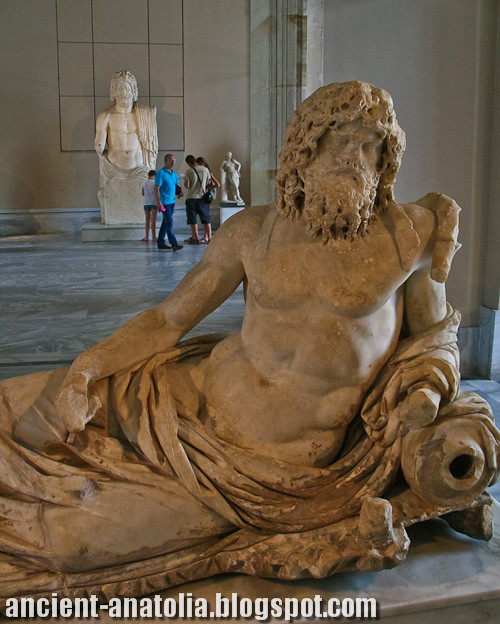
PHOTO: Oceanus of Ephesus and Zeus of Gaza in the background at Istanbul Archaeology Museum.
In classical antiquity, Oceanus was believed to be the world-ocean, which the ancient Romans and Greeks considered to be an enormous river encircling the world. Strictly speaking, Oceanus was the ocean-stream at the Equator in which floated the habitable hemisphere. In Greek mythology, this world-ocean was personified as a Titan, a son of Uranus and Gaia.
The World Ocean is the interconnected system of the Earth's oceanic waters, and comprises the bulk of the hydrosphere, covering almost 71% of the Earth's surface. The unity and continuity of the World Ocean, with relatively free interchange among its parts, is of fundamental importance to oceanography. A global ocean has existed in one form or another on Earth for eons, and the notion dates back to classical antiquity.
In Hellenistic and Roman mosaics, this Titan was often depicted as having the upper body of a muscular man with a long beard and horns (often represented as the claws of a crab), and the lower torso of a serpent (cf. Typhon).
Some scholars believe that Oceanus originally represented all bodies of salt water, including the Mediterranean Sea and the Atlantic Ocean, the two largest bodies known to the ancient Greeks. However, as geography became more accurate, Oceanus came to represent the stranger, more unknown waters of the Atlantic Ocean (also called the "Ocean Sea"), while the newcomer of a later generation, Poseidon, ruled over the Mediterranean.
Oceanus' consort is his sister Tethys, and from their union came the ocean nymphs, also known as the three-thousand Oceanids, and all the rivers of the world, fountains, and lakes. From Cronus, of the race of Titans, the Olympian gods have their birth, and Hera mentions twice in Iliad book xiv her intended journey "to the ends of the generous earth on a visit to Oceanus, whence the gods have risen, and Tethys our mother who brought me up kindly in their own house."